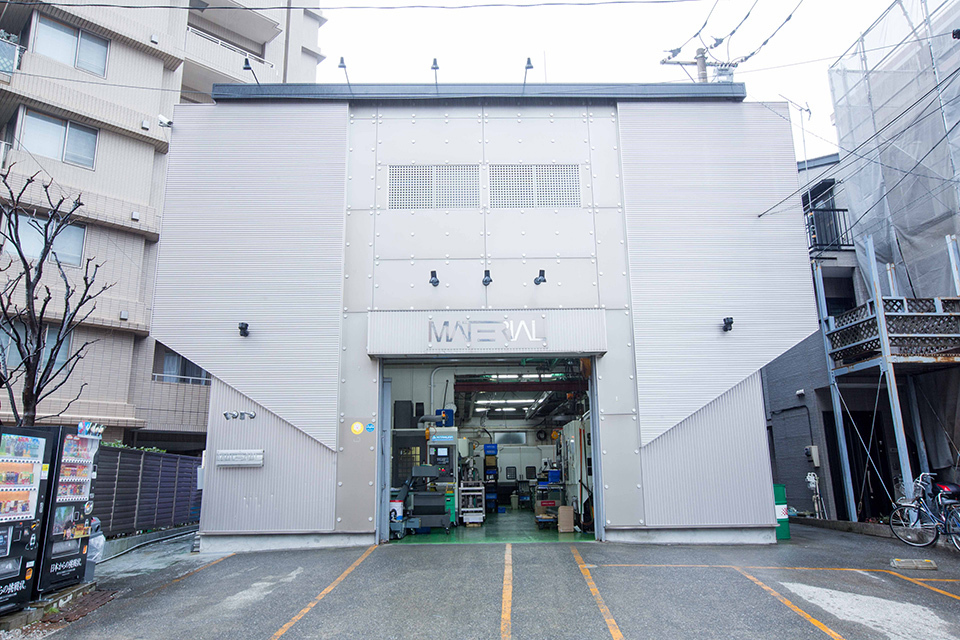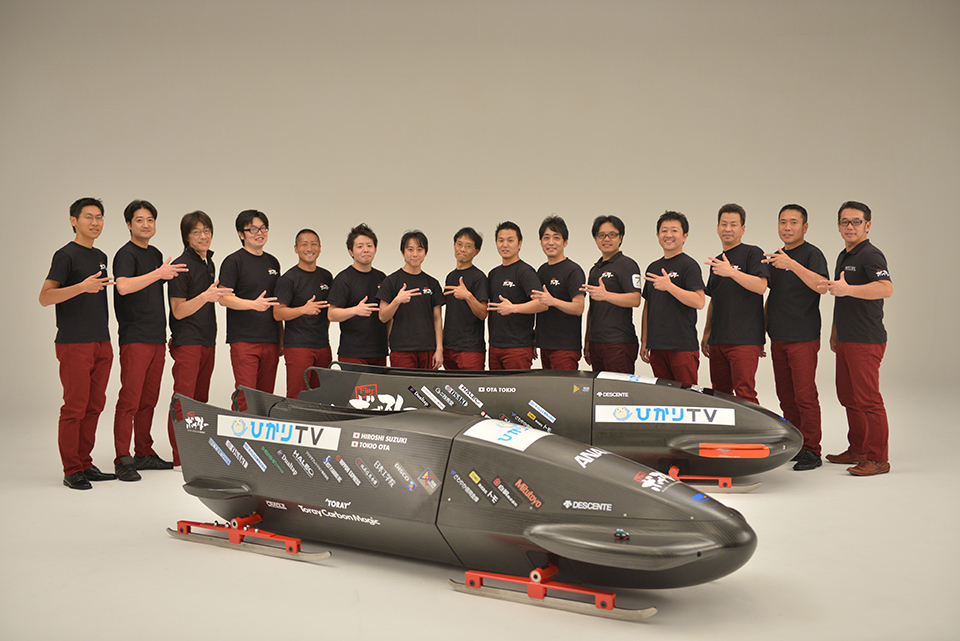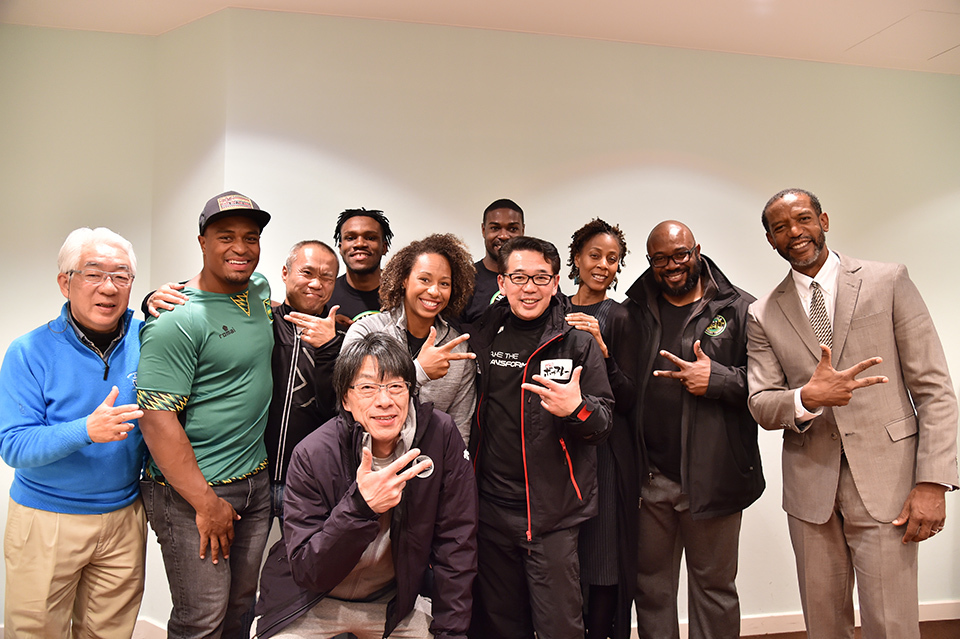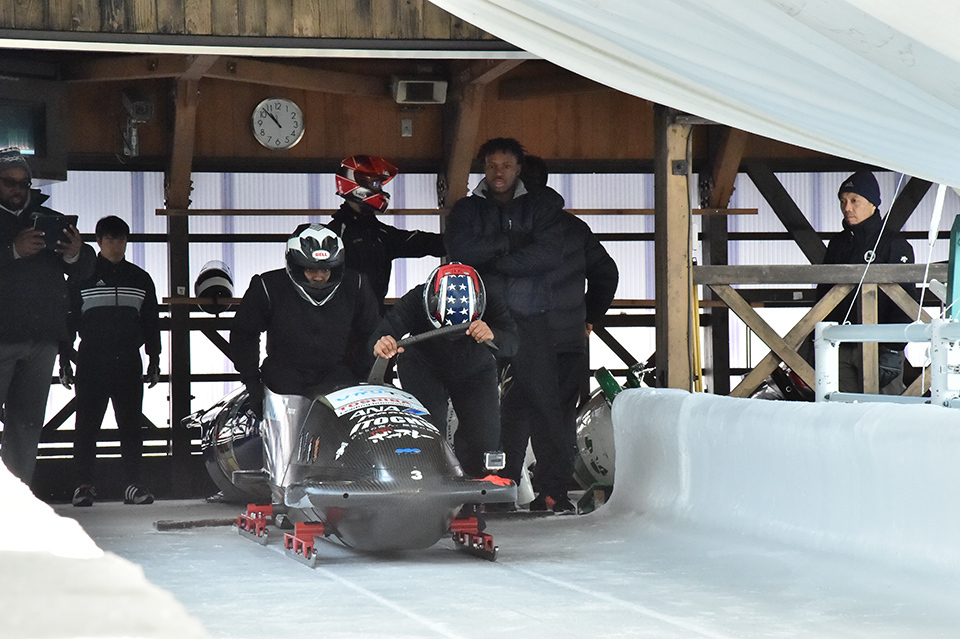“We did it!” So whooped Jun’ichi Hosogai as he stood at the Nagano Bobsleigh-Luge Park on January 16, 2016, with a big smile on his face and his arms raised high. Prompting the display of joy was the announcement that the Jamaican National Bobsled Team had chosen the Shitamachi Bobsleigh to use in its qualifying bid for the 2018 Winter Olympics in Pyeongchang, South Korea.
Shitamachi , literally “low city,” refers to traditional urban districts characterized by a mix of small factories and residences. The Shitamachi Bobsleigh was developed by a group of independent manufacturers in the shitamachi district of Ota City, Tokyo, in a project headed by Hosogai, president of an aluminum processing company. He explains, “The Jamaican team said the decisive point was our team’s positive response to even their most demanding requests for adjustments to the sled. That’s what we’re good at.”
Hosogai launched the project in 2011 to help restore Ota’s luster as a center for manufacturing craftsmanship. In the 1980s the city was home to 9,000 workshops specializing mainly in metalworking. By working in cooperation and complementing each other’s strengths, these small factories were able to accept orders of all sorts and turn out excellent products.
Sluggish economic conditions took their toll on the city’s workshops, however, and many operators who were getting on in years closed their shops for lack of successors. In the face of this decline, Hosogai conceived the idea of advertising Ota’s manufacturing prowess by building an Olympic bobsleigh. This meant learning how to work with carbon fiber, a technology that Ota manufacturers did not have. But Hosogai was convinced that building a bobsleigh was something that would allow them to display their skills. For one thing, it does not require an engine. And bobsleigh builders include companies like Ferrari and BMW. It was exciting to think of winning on the world stage against that sort of competition.
To start, Hosogai borrowed a bobsleigh, disassembled it, and made diagrams of each part—150 in all. He laid them out in a conference room and invited people from some 40 local workshops to examine them and select ones they had the know-how to reproduce. The invitees scrutinized the parts and diagrams with a mixture of puzzlement and curiosity. Then the spirit of complementary cooperation emerged, as they discussed which of them should take which part. “I can do this one.” “Here’s something for your place.” In the end, there were takers for just about all of the items. Hosogai gave the manufacturers 12 days to make the parts, and to his pleasant surprise, the full set was completed a day before the deadline. “That’s the power of Ota for you,” he boasts.
Once completed, the Shitamachi Bobsleigh promptly delivered results. In 2012 it carried a team to victory in the women’s division of the All Japan Bobsleigh Championships, and the following year it crossed the finish line seventh at two men’s events overseas. There were high hopes the Japanese national team would select it for the Winter Olympics in Sochi, but in the end it was passed over, partly because it had not been possible to test its reliability sufficiently at venues in Japan.
Undaunted, Hosogai quickly shifted gears. He approached the Jamaican team, impressed by their vast potential. And to back him up, he called on the Jamaica-savvy reggae musicians in a local band he plays with as a hobby. “When you run a small workshop, you learn to tap every available resource,” he chuckles.
The road to the Winter Olympics will be long and winding. But for the Jamaican National Team and the Shitamachi Bobsleigh, it is the beginning of a dream.
Shitamachi Bobsleigh official website
Jun’ichi Hosogai
Born in Ota City, Tokyo, in 1966. In 1992 he established Material Co., Ltd., an aluminum processing and production firm (below) that currently does business with 500 companies. Head of the Shitamachi Bobsleigh project, which he started in 2011 with the goal of reviving local industry in Ota.
Members of the project and their Shitamachi Bobsleighs: The project has given manufacturers in Ota the opportunity to learn carbon-fiber technology, which complements their metalworking expertise.
Posing with members of the Jamaican bobsleigh team.
Working on the bobsleigh to further improve its performance in preparation for the Winter Olympics.
Excerpts from the Policy Speech by
Prime Minister Shinzo Abe to the 183rd Session of the Diet, February 28, 2013
(The mettle to aim at being the No.1 in the world)
There are people from small-scale factories resolutely attempting to take on the Ferrari and BMW corporations.
But this is not in the area of automobiles. Mr. Hosogai, who operates a small business in Tokyo,s Ota City, has launched a project together with his colleagues to produce sleds for bobsled competitions domestically.



































































































































